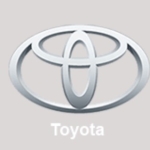All you need to know about supply chain finance
What is the supply chain?
SCF, which stands for “supply chain financing,” is a way for suppliers to get paid early on their invoices. Both buyers and sellers can get the most out of their working capital with supply chain financing. This makes it less likely that the supply chain will break down. SCF is sometimes called “reverse factoring.”
Unlike traditional ways of financing receivables, such as factoring, supply chain finance is set up by the buyer, not the provider. Another important difference is that suppliers can get financing for their supply chains based on the credit rating of their customers instead of their own. Because of this, most suppliers can get financing for their part of the supply chain at a lower cost than they would otherwise. Supply chain financing is just as important for a business to grow as payroll financing. 1 Click Capital can help your business by giving you low-cost financing for your supply chain. When you use unsecured business loan like payroll financing, you pay your workers even when you don’t have the money to do so. In the same way, you need to make sure you have enough money to do your company’s core business activities.
First, the buyer will sign a contract with a company that offers supply chain financing. Then, it will try to get its suppliers to join the programme. Some supply chain finance programmes are run by technology experts who use a dedicated platform and more than one funder, while others are run by a single bank or finance provider.
Instead of focusing on bringing on their 20 or 50 best suppliers, businesses can now use technology-driven solutions to offer supply chain financing to hundreds of thousands or even tens of thousands of suppliers. This is made possible by platforms that are easy to use and supplier onboarding methods that make it easy to sign up a lot of vendors quickly and easily.
How to finance the supply chain
The supplier sells goods or services to the buyer.
2. The seller sends the buyer an invoice, which must be paid within a certain amount of time (e.g., 30 days, 60 days, or 90 days)
The customer agrees to pay the bill.
4. The supplier wants the invoice to be paid early.
5. The buyer pays the funder by the due date on the invoice.
6. The funder sends the money to the supplier after taking out a small fee.
As an example, let’s use a made-up supply chain finance system.
A customer tells a merchant what they want to buy. After delivering the goods to the client, the seller would usually ask for payment according to the buyer’s payment terms, such as “net 30.” The buyer would then have 30 days to pay the bill.
If the buyer doesn’t have the cash on hand or would rather keep it as working capital, the supplier can use an existing supply chain financing solution to get their invoices paid faster.
The financier or lender will then pay the bill right away on behalf of the buyer and give the buyer more time to pay, maybe up to 60 days.
The buyer keeps their working capital for longer without hurting their relationship with the supplier, and the supplier gets paid right away, giving them more of their own working capital to spend.
Advantages of supply chain finance
Among the benefits for the buyer are: • More working capital. Buyers can benefit from supply chain finance by making better use of their working capital. This is because many companies choose to implement supply chain finance programmes at the same time as efforts to standardise payment terms for suppliers.
• Improve the condition of the supply chain. By giving suppliers supply chain financing, buyers can make it less likely that there will be a disruption in the supply chain in the future, which could affect their own operations.
• Get along better with suppliers. By giving suppliers access to reasonable financing, buyers can strengthen their relationships with them and possibly gain an edge in negotiations.
Some of the benefits for the vendor are: • More working capital. By using supply chain finance, suppliers can get paid for their bills sooner than they would otherwise. So, their days sales outstanding (DSO) go down, which is good for working capital.
• Get credit for less money. It is a good way to get money because the cost of borrowing is often lower for suppliers who use supply chain financing than for suppliers who use other methods like factoring.
• Make cash estimates more accurate. When a supplier uses supply chain financing, the timing of payments may become more consistent, which makes it easier for them to predict their future cash flows.








